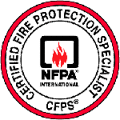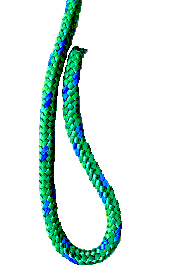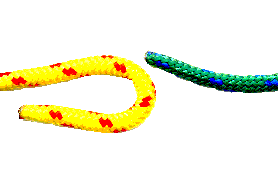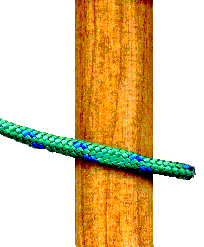Confined Space Rescue Training DVD - 1+ Hour
Price:
$65.52
Product Description: Offering You More Firefighter Training For A Lot Less Than Anyone Online
  The National Fire Protection Association (N.F.P.A),   and we participate in and support the   Certified Fire Protection Specialist program.    
TRAINING - DESIGNED BY FIREFIGHTERS FOR FIREFIGHTERS   Many workplaces contain spaces that are considered "confined" because their configurations hinder the activities of employees who must enter, work in, and exit them...     OSHA and NIOSH report that "Confined Space" refers to a space which by design has limited openings for entry and exit, unfavorable natural ventilation which could contain or produce dangerous air contaminants, and which is not intended for continuous employee occupancy. Confined spaces include but are not limited to storage tanks, compartments of ships, process vessels,  pits, silos, vats, degreasers, reaction vessels, boilers, ventilation and exhaust ducts, sewers, tunnels, underground utility vaults, and pipelines.   According to data collected by the U.S. Department of Labor (USDOL), Bureau of Labor Statistics (BLS) Census of Fatal Occupational Injuries (CFOI) program, fatal injuries in confined spaces  fluctuated from a low of 81 in 1998 to a high of 100 in 2000 during the five-year period, averaging 92 fatalities per year.   firefighters should be trained to enter spaces and also what OSHA calls permit-required confined spaces which is one that meets the definition of a confined space and has one or more of these characteristics:
    NFPA 1006 & 1670   Some of the subjects to be covered are:   Definition of Confined Space How workers become victims Air Quality & SCBA Confined Space Rescue Techniques at the Operations Level Rescue Preparation Confined Space Rescue Size up The 5 Needed Operations Criteria Search for and Removal of Victims Methods of Locating the Victim Develop an Action Plan Calibration for Air Quality Readings Monitoring Atmospheric Conditions A lesson on how Oxygen Levels effect the Body Creating a Safe Rescue Work Zone When is SCBA Needed Preparing for the Rescue Creating an Accountability System (Staging) Ventilation & Types of Ventilation How to Ventilate the Space Need for RIT Team Locking out or Tagging out Need for Shoring Illumination Establishing Anchor Points  Accessing the Patient Packaging the Patient Types of Packaging Devices Confined Space Dangers Rules for Working a Confined Space Using a Skid Stretcher and much much more   also included in this DVD SET FREE GIFT   ROPES & KNOTS     Did you know all knots comprise of ROUND TURNS, LOOPS AND BIGHTS?       THIS VIDEO DVD DEMONSTRATES THE TYING OF 3 OF THE MAJOR KNOTS REQUIRED IN FIREFIGHTING & RESCUE. WITH REAL LIFE AND FIELD DEMONSTRATIONS
    LEARN TO TIE THE 3 MOST IMPORTANT KNOTS LEARN DIFFERENT ROPE USES, LEARN HOW TO CARE FOR YOUR ROPE, LEARN HOW TO CLEAN & REPAIR YOUR ROPE.   ""IT IS BETTER TO PERFECT A FEW KNOTS THEN CONFUSE OVER MANY""   ROPES & KNOTS        
LEARN: 1. Types Of Ropes:   A. Life Safety B. Utility   2. Rope Materials:   A. Nylon B. Polyester C. Polypropylene D. Polythylene E. Manilla F. Cotton G. Kevlar/Aramind H. H-Spectra/Polyethylene   3. Rope Construction:   A. Laid (twisted) B. Braided C. Braid-on-Braid D. Kernmantle   YOU WILL ALSO GET REAL LIFE DEMONSTRATIONS THAT TAKES YOU STEP BY STEP THROUGH TYING 3 OF THE MAJOR KNOT INVOLVED IN FIREFIGHTING, SUCH AS:   THE BOWLINE KNOT THE CLOVE HITCH KNOT THE SHEETS BEND (BECKETS BEND) KNOT
ALSO LEARN BY DEMONSTRATIONS, HOW TO USE THESE KNOTS IN TYING, RAISING AND LOWERING FIREFIGHTER GEAR & EQUIPMENT SUCH AS: PRESSURE FANS LADDERS HOSELINES CHARGED HOSELINES PIKE POLES AXES Etc.   ALSO INCLUDED IN THIS VIDEO:
  A GREAT TEACHING TOOL   ALSO INCLUDED CARING, REPAIRING, YOUR ROPE   THIS IS A DEFINATE TO YOUR FIREFIGHTING TRAINING PACKAGE |
ÔĽŅ


Featured DVD's
|
$19.75
|
|
$19.99
$16.99 You Save: $3.00 |
|
$48.56
$16.99 You Save: $31.57 |
|
$47.85
$19.99 You Save: $27.86 |
No images








